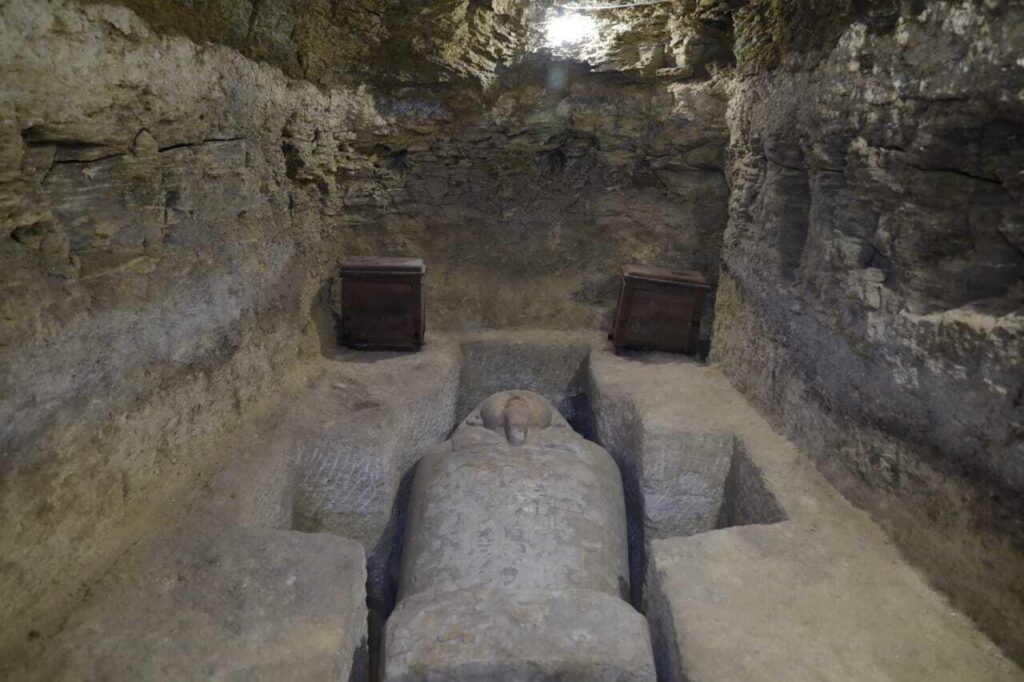In the sun-scorched landscape of southern Israel, where modern technology and ancient history frequently enough collide, a routine construction project turned into an archaeological revelation. As workers diligently laid the groundwork for a cutting-edge solar plant, their excavators unearthed more than just earth—they unveiled a silent sentinel of human civilization, a fortress that had slumbered beneath the soil for nearly five millennia. This unexpected discovery not only paused the solar plant’s construction but also offered a tantalizing glimpse into a world long forgotten, bridging the gap between renewable energy’s future and humanity’s distant past. In the scorching desert landscape of southern Israel, routine construction work at a solar energy site transformed into an archaeological revelation that would rewrite local historical narratives.Workers digging foundations for a massive solar plant suddenly encountered something extraordinary—an ancient fortified complex dating back to the early Bronze Age.
Archaeologists from the Israel Antiquities Authority quickly descended upon the site, recognizing the significance of the unearthed structure. Preliminary excavations revealed a sophisticated defensive settlement spanning approximately one acre, with remarkably preserved stone walls that have remained hidden for millennia.
Initial assessments suggest the fortress was strategically positioned to control crucial trade routes connecting different regional civilizations. Pottery fragments, metal tools, and distinctive architectural elements indicate a complex society with advanced engineering and organizational skills far beyond previous understanding of that historical period.
The site’s location near modern-day Ashalim provides a unique glimpse into early urban development in the Negev desert region. Researchers were especially intrigued by the complex’s architectural layout, which demonstrated sophisticated defensive strategies typical of emerging societal structures during the early Bronze Age.
Ceramic artifacts recovered from the site offer tantalizing insights into the daily lives of its ancient inhabitants. Intricate cooking vessels, storage containers, and ritualistic objects paint a nuanced picture of a community adapting to challenging desert environments while maintaining robust social structures.
Radiocarbon dating and stratigraphic analyses confirmed the fortress’s age, placing its construction around 3000 BCE. This discovery challenges existing historical narratives about human settlement patterns in the region, suggesting more advanced organizational capabilities than previously documented.
The unexpected archaeological find momentarily halted solar plant construction, redirecting resources toward comprehensive archaeological documentation. Experts carefully mapped and preserved the site, ensuring that this remarkable historical treasure would be thoroughly studied before any further development.
For the construction team,what began as a routine infrastructure project became an extraordinary journey through time. Their mechanical excavations inadvertently unveiled a historical puzzle that would captivate archaeologists and historians worldwide.
The discovery underscores the unpredictable nature of archaeological research, where modern technological advancements can unexpectedly intersect with ancient human narratives.As solar energy infrastructure continues to expand across historical landscapes, the potential for similar groundbreaking discoveries remains tantalizingly high.Researchers continue to analyze the fortress, promising future revelations about this sophisticated ancient civilization that once thrived in one of the world’s most challenging environments.




